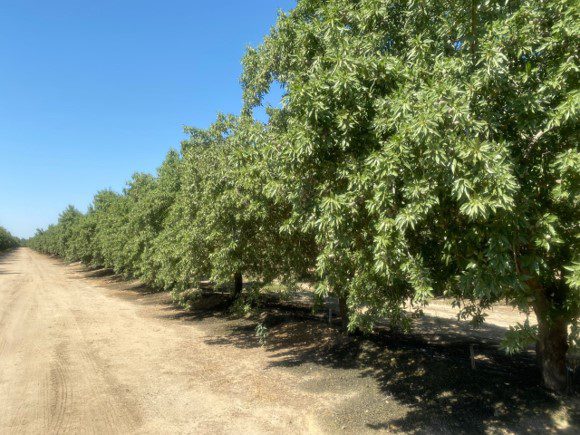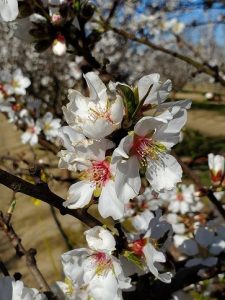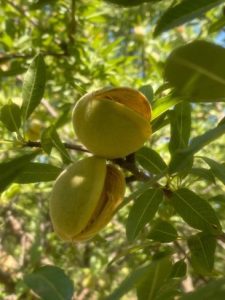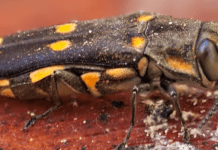
There are currently three categories of biologicals recognized by the Environmental Protection Agency: Biopesticides, biostimulants and biofertilizers. Biopesticides are derived from natural materials such as animals, plants, bacteria and certain minerals. Biopesticides can further be divided into three subcategories, including microbials, biochemicals and plant-incorporated protectants. Microbials are made from microorganisms, such as bacteria, viruses, fungi and protozoans as well as byproducts of their fermentation process.
Chromobacterium subtsugae strain A396 and Burkholderia rinojensis strain F727 are two bacterial species that have been formulated to provide broad-spectrum activity against arthropod pests. Like many other biopesticides, these products are exempt from maximum residue limit (MRL) requirements, which alleviates MRL concerns for export of treated commodities. They also require minimal personal protective equipment due to comparatively low toxicity profiles. Most biopesticides allow a zero-day pre-harvest interval, so treatments can be made leading up to and on the day of harvest if needed. Biologicals typically offer a four-hour re-entry interval to treated areas, which allows for increased worker flexibility. Many biopesticides are OMRI-listed and can be used in both conventional and organic programs. It is essential to always refer to the product label prior to making pest management decisions, including tank mixing.
C. subtsugae strain A396 was initially discovered under a hemlock tree in Maryland. Its action is due to both chromides and proteins in the heat-killed fermentation, which contains no viable bacteria. Treated arthropods stop feeding immediately but remain moribund for days, eventually succumbing. Short-term repellency and reduction in fecundity is also associated with this biopesticide. C. subtsugae should be applied to newly hatched arthropods when the population is first noticed. It also is excellent in combination or rotation with other products.
The B. rinojensis strain A396 bacterium came from a Buddhist temple garden in Japan. It is not related to any human pathogenic Burkholderia species; the biopesticide fermentation is heat-killed and contains no viable bacteria. Treated arthropods cease feeding immediately due to the gut disruption action of this biopesticide, though it can take several days before death occurs. This biopesticide should also be applied to newly hatched arthropods when the population is first noticed. B. rinojensis can be used in programs with other conventional products as well as with other biologicals.
The addition of B. rinojensis and C. subtsugae to existing pest management programs can enhance control efforts of the three main arthropod pests of tree nuts: navel orangeworm, walnut husk fly and webspinning spider mites.

Navel Orangeworm, Amyelois transitella
Navel orangeworm (NOW) is a Lepidopteran (moth) pest with a broad host range. It damages crops due to the feeding of larvae inside nuts or between hulls and shells. Larvae bore into the nutmeat, can consume most of the nut and produce large amounts of webbing and frass. Also, multiple larvae can be found feeding in a single nut. This damage can lead to fungal infections, which in turn can result in downgrading or rejection of nut crops. When aflatoxin-producing fungi are present, human safety can be of additional concern. Tolerance to NOW and its damaging effects are very low, increasing the chances of export rejection.
One of the major challenges with this pest is the need for winter sanitation, which involves removal of all unharvested nuts from orchards. This is due to NOW’s ability to overwinter in nuts and cause damage the following year. However, sanitation is expensive since it is usually done by hand. Timely removal of nuts from the orchard floor is also important due to the potential for further damage. As there are only a handful of insecticides currently labeled for NOW, the potential for resistance development is high, which is where biologicals can help.
Over the past several years, ProFarm Group, Inc. (PFG) has collaborated in many studies targeting NOW with UCCE as well as private contract researchers. Research results indicate that B. rinojensis applied alone, or in programs, can be a very effective tool in NOW management.
Tank mixing biologicals with either conventional chemistries or other biologicals frequently results in enhanced control compared to the efficacy of either partner applied alone.
Typical recommendations include adding B. rinojensis at 1 quart per acre to either chlorantraniliprole or methoxyfenozide for improved control of NOW. Such programs decrease the potential for insecticide resistance by introducing multiple modes of action, leading to higher target pest mortality. Applied alone, B. rinojensis should be applied at the 2 quarts per acre rate. Application timings for NOW management are May spray, early hullsplit and a third application 14 days after hullsplit if needed. This biopesticide also provides improved management of peach twig borer and webspinning spider mites.

Walnut Husk Fly, Rhagoletis complete
Walnut husk fly (WHF), is a Dipteran (fly) pest of walnuts. Adult female flies lay eggs within the hull of walnuts, after which larvae hatch and feed within the hull. This feeding activity causes blackened areas to develop, which eventually decay and cause staining of the nutshell. WHF infestations during the early growing season can cause kernels to shrivel and mold, rendering them unmarketable. It is important to carefully monitor WHF populations and make timely treatments when flies are noted in orchards, because once eggs are laid within the hull, damage control becomes very difficult.
Past research with Dr. Robert Van Steenwyk, entomologist with UCCE at UC Berkeley, has indicated that B. rinojensis can be an effective option for WHF management programs. The addition of B. rinojensis at 2 quarts per acre to attractant bait made of hydrolyzed corn meal at 3 pints per 100 gallons, or to Molasses at 4 gallons per 100 gallons of water can help to reduce WHF infestations. B. rinojensis can also be applied as a standalone at 4 quarts per acre to manage WHF populations. Applications should be made when WHF adults are active in orchards, based on trapping observations. For additional information, please refer to the 2(ee) listed on the PFG website at marronebio.com/download/venerate-xc-2ee-recommendation-for-managing-walnut-husk-fly-on-walnut-trees/.
Webspinning Spider Mites, Tetranychus sp.
Spider mites can affect a wide variety of crops. These pests can reproduce rapidly and may cause extensive damage to foliage due to their feeding habits. Mites puncture plant cells with their mouthparts, which leads to stippling and loss of chlorophyll, resulting in decreased photosynthesis. They may also directly damage fruit in many crops, leading to downgrading or rejection. Mites in the Genus Tetranychidae can produce copious amounts of webbing, which makes it harder for miticides to reach their intended target and provide effective control. Multiple generations per year paired with multiple treatments have led to older miticides becoming less effective, due to populations developing resistance.
PFG offers two bioinsecticides: C. subtsugae, which repels, stops feeding and reduces reproduction, and B. rinojensis, which functions through feeding interference and causes death by ingestion. Both products can be used alone or in combination with other conventional and biological products that are labeled for use against mites on tree nuts. Used alone, C. subtsugae is generally applied at 2 pounds per acre and in combination is used at 1 pound per acre. As a standalone, B. rinojensis is applied at 2 quarts per acre and tank-mixes are applied at 1 quart per acre. It is best to start applications as soon as mites are noticed, ensuring thorough coverage of both sides of the leaves. The treatment interval is generally 7 to 10 days but can be shortened under high pest pressure. Use of a surfactant is highly recommended as webbing created by pest mites can hinder penetration of the spray solution onto plant surfaces.
C. subtsugae and B. rinojensis biopesticides have the benefit of being extremely low-impact on beneficial arthropods as confirmed by third-party studies. Eurofins Agroscience Services conducted an acute toxicity study over 24 hours at three times the maximum label rate for C. subtsugae and B. rinojensis. No significant mortality was observed for many beneficial arthropods across several entomological families. A chronic toxicity study of both pesticides, performed by Vineland Research Institute, resulted in no significant mortality or reduction in reproductive capacity over 96 hours in four predatory mite species. This suggests C. subtsugae and B. rinojensis can be used with minimal effect on natural enemy populations endemic to orchards, which keep both primary and secondary pest populations in check. Additionally, the products can be used along with IPM programs that utilize releases of natural enemies.
Today’s IPM practitioners have an ever-increasing set of tools to choose from, with biologicals at the forefront of new technology. Biological products are highly compatible, efficacious and low-impact to beneficial arthropods. They represent valid resources for crop management professionals to incorporate into their existing pest management programs.










